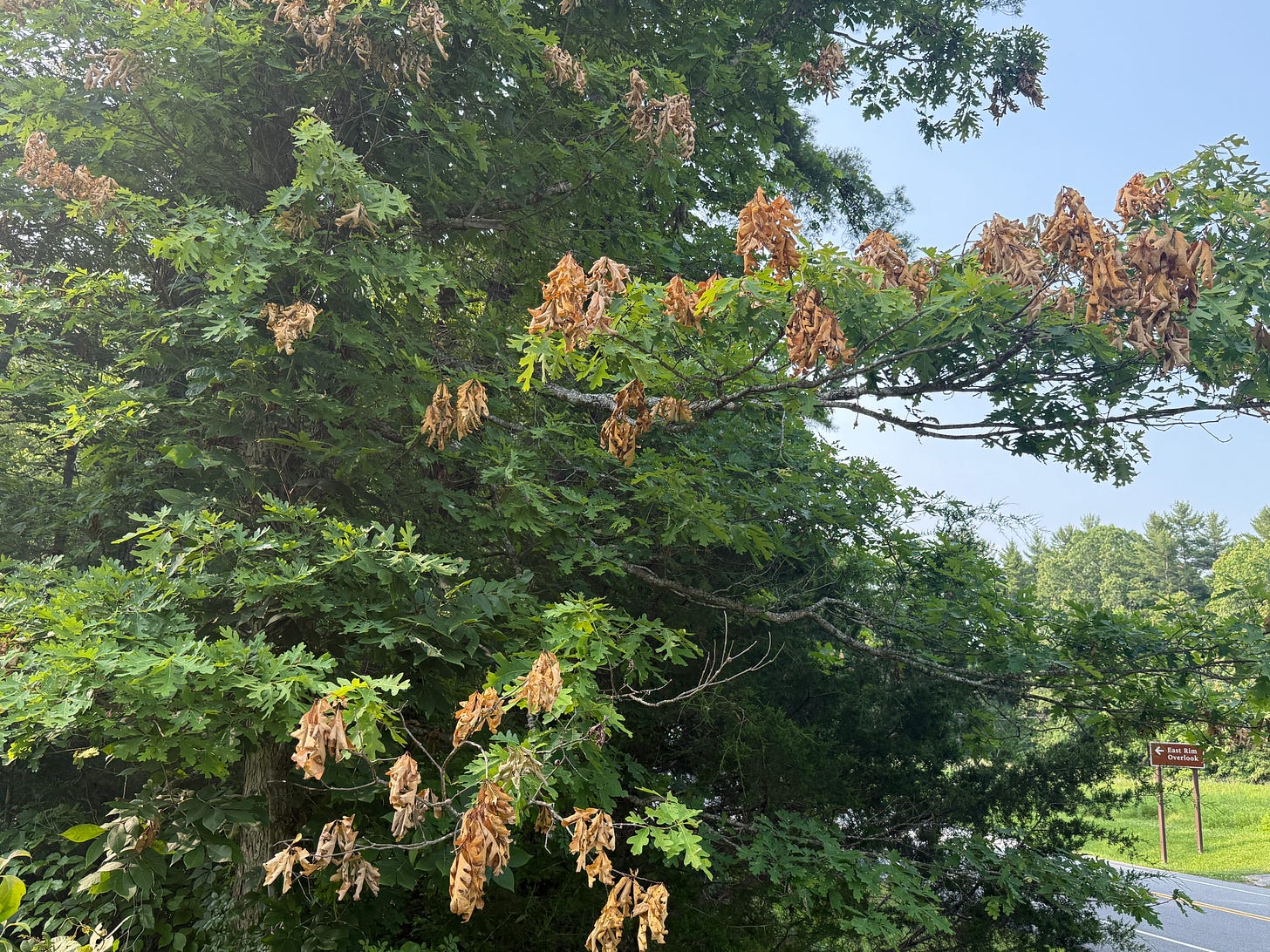The incessant drone that began every morning and grew steadily quieter in the afternoons is nearly gone, and will disappear completely in the next few days. The 2025 emergence of the periodical cicada’s Brood XIV is just about over.
Now, though, comes the somewhat unsightly tree damage that the cicadas leave in their wake.
All species of cicada spend most of their lives beneath the ground. In the case of periodical cicadas, which have synchronized emergences and show up by the millions in different geographic areas each year, they spend either 13 or 17 years beneath the surface before finally emerging. Scott County and surrounding counties are home to Brood XIV, one of the 17-year varieties, which emerged this year.
The cicadas that were so noisy and so prevalent throughout the month of May are the offspring of cicadas that last emerged in 2008. Once cicadas emerge above-ground as adults, they have one purpose: to mate and reproduce. The male cicadas make all the racket we’ve been hearing for the past few weeks in order to attract the females. The females, once bred, lay hundreds of eggs. And then they die. In a few weeks — six to 10 weeks, to be exact — the eggs will hatch, the nymphs will drop to the ground and burrow several feet below the surface, and that’s where they’ll remain for the next 17 years. Although a few annual cicadas emerge every year in late summer, the next major emergence of periodical cicadas like we’ve seen this spring will be in 2042, when this year’s offspring emerge.
Throughout Scott County, tufts of dead leaves are showing up on trees. Some trees are more susceptible than others, and some areas are harder-hit than others, but most of the dead leaves can be attributed to the same thing: cicada eggs. Long after the cicadas are dead and gone, the dead leaves can still be seen.
The reason for the dead leaves: female cicadas chew tiny slits in the bark of twigs to deposit their legs. Each female deposits 200 to 400 eggs. If enough cicadas lay eggs in the bark of a single twig, that twig will sustain enough damage to die.
Because cicadas prefer small twigs, usually less than half an inch in diameter, for egg-laying, it’s only the outer layer of leaves on a tree that will die. If an entire tree limb is dying, it is likely cause by something other than cicadas — a wind storm, perhaps, or a parasite or fungus of some sort.
Oak trees are especially susceptible, but cicadas are attracted to many other species of trees, as well.
Experts say mature, healthy trees are unlikely to suffer long-term damage from the egg-laying process. Unsightly though the dead leaves may be, the damage amounts to a light pruning for most trees.
Fruit-growers should be more concerned about potential cicada damage, since the dead tips can lead to a reduced harvest this year.
The experts say that the dead tips can be pruned away, if desired. If you’re worried about disturbing the cicada eggs, it is best to wait until fall to prune the trees.




